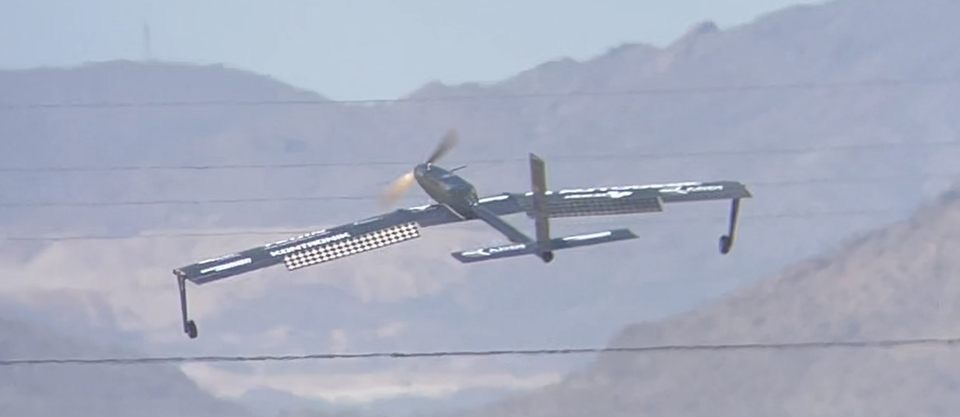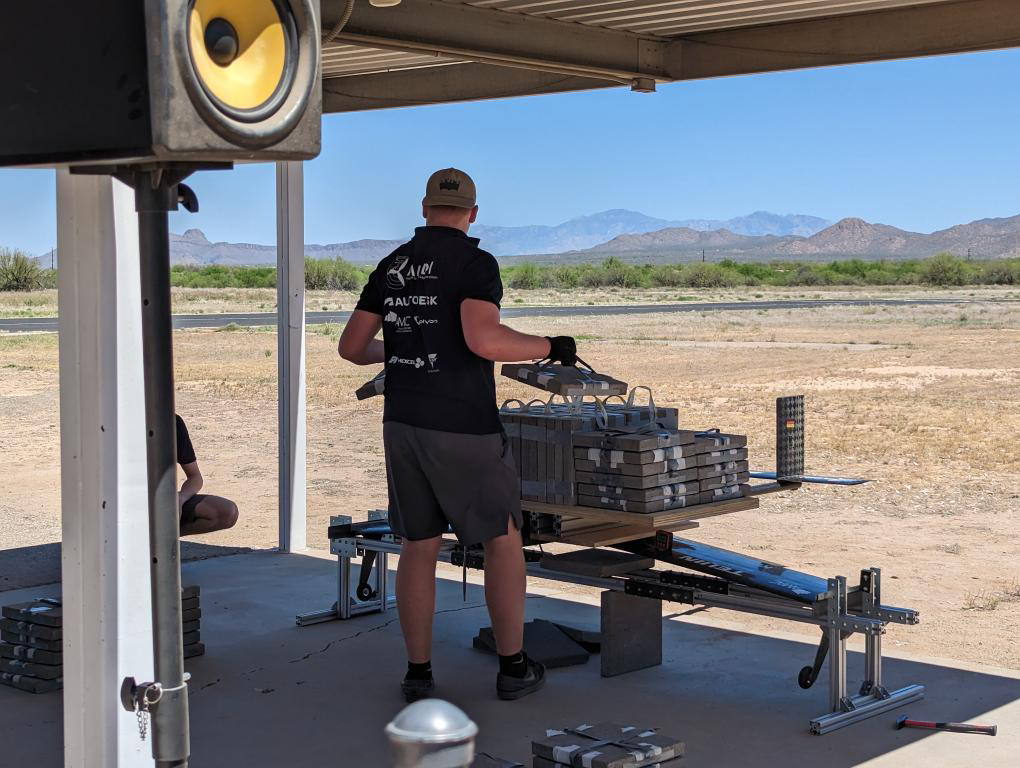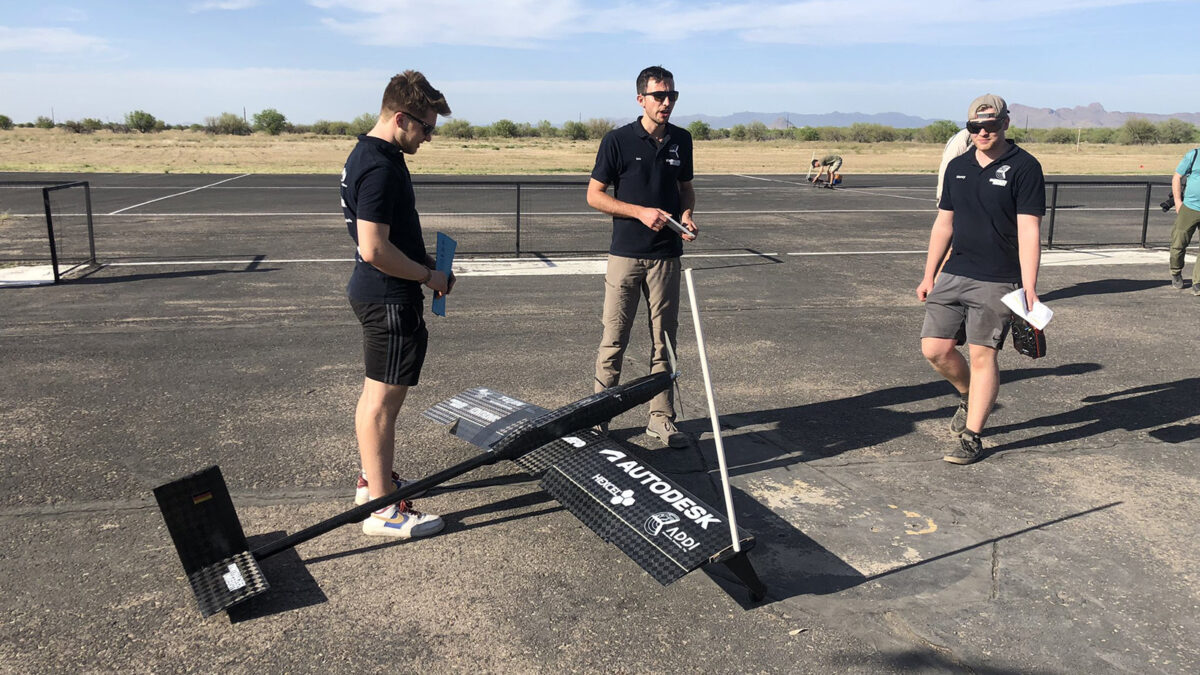DBF 2023
Description
“design, fabricate, and demonstrate the flight capabilities of an unmanned, electric powered, radio controlled aircraft”
- Organizer AIAA (American Institute of Aeronautics and Astronautics)
- >100 international teams
- Different rules every year
What is the DBF?
The DBF (Design, Build and Fly) is the world's largest competition for designing, building and flying an unmanned aircraft.
The competition is being organised by the American Institute of Aeronautics and Astronautics (AIAA) and gives
interdisciplinary student teams the challenge of developing an unmanned,
electrically powered aircraft that must fulfil annually
changing mission requirements.
WHAT WERE THIS YEAR'S MISSIONS AND WHAT WERE THE POINTS DISTRIBUTED FOR?
The basic rule was that the entire aircraft had to fit into an airline checked bag
and the battery must not exceed an energy of 100Wh.
Furthermore, the maximum current was limited by a 100A fuse.
In addition, 2 identical pairs of wings have to be produced and it is decided
by one coin toss per side which wing is used.
What is the DBF?
Mission 1: Stage rounds (given points 1)
In the first mission, the aircraft must be set to ready to fly condition from the transport box within 5 minutes.
he aircraft must be able to take off on a 20 metre runway and complete three laps within 5 minutes.
This time window begins when the aircraft takes off from the runway
for the first time.
Mission 2: Surveillance flight
In the next mission, the aircraft must again be made ready to fly from the transport box within 5 minutes.
This time, a payload in the form of an "electronics package"
of a specified minimum size is installed in the aircraft.
The aim is to fly as many laps as possible with the largest possible payload within 10 minutes.
The payload must make up at least 30% of the total weight.
Mission 3: Timed flight with jammer antenna (3 laps)
In the last mission, the stability of the aircraft is tested with the help of an "antenna"
in the form of a PVC pipe attached to one end of the wing.
The aeroplane must fly three laps as quickly as possible with the attached antenna.
Ground Mission:
One mechanic and one pilot from each team take part in the ground mission.
The aim is to assemble the aircraft within a time frame of 10 minutes and attach the maximum load
that the aircraft can withstand in a static situation. Meanwhile, the pilot
checks that all flight controls are working. As soon as the load has been attached,
a holding phase of 30 seconds must be endured. If signs of failure or deformation
occur during this time, the test is deemed invalid. After this holding phase, the pilot
tests the functionality of all flight controls again.

TECHNICAL SPECIFICATIONS
Aeroplane Empty Weight: 6,5kg
Span: ~2,2m
Motors: 3,5kW Kontronik Pyro 850-40 L Competition
Regulator: Kontronik Cool KOSMIK 170 HV-I
Accumulator: SLS 6s 4500mAh for Mission 1 & 2, SLS 8s 3000mAh for Mission 3
Propeller: Mission 1 und 2: APC 21x12E; Mission 3: APC 17×1
Max. thrust: Mission 1 und 2: 90N; Mission 3: 100N

Results:
We started with the ground mission, in which we applied a very impressive load of
344 kilograms to the middle 20% of the wing in the first test.
Hugo 5 passed the test without any problems thanks to its negative V position of the wings (a bridge is formed),
so that we could continue directly with the dynamic disciplines.
Once Mission 1 had proven the flying skills, it was on to Mission 2. With a payload approximately twice
as heavy as all the competitors (7.5kg) and a distance of 12 laps within the 10 minutes,
we were able to set ourselves well ahead of the competition. Most of the competitors also reached the 12 laps,
so we were on a par in terms of efficiency, but only reached half the payload capacity,
attributed to the enormously long but thin wings.

In Mission 3, Hugo 5 was able to show just how much power it has.
Despite a weight of 6.5kg, one of the heaviest aircraft in the competition, we were able to achieve
the fastest lap time of 1 minute and 19 seconds and this despite an antenna with a
length of 97 centimetres (a longer antenna would not have fitted into the transport box).
Finally, we tried to improve the ground mission.
After we had tested one of our prototypes the evening before and it
withstood a weight of over 1000 pounds (approx. 450kg),
we wanted to demonstrate this with the final competition aircraft.
Unfortunately, in the heat of the Arizona desert, it gave up at around 930 pounds and one wing buckled.
However, this could not stop us from completing one last flight, for which we quickly repaired the wing with an additional layer of carbon,
and our pilot demonstrated his flying skills with a beautiful aerobatic flight, despite the negative flight characteristics of the negative V position.
https://www.aiaa.org/dbf/competition-information/2023-competition-scoring
Contact
Still have questions or want to join us? Simply send us a mail.


